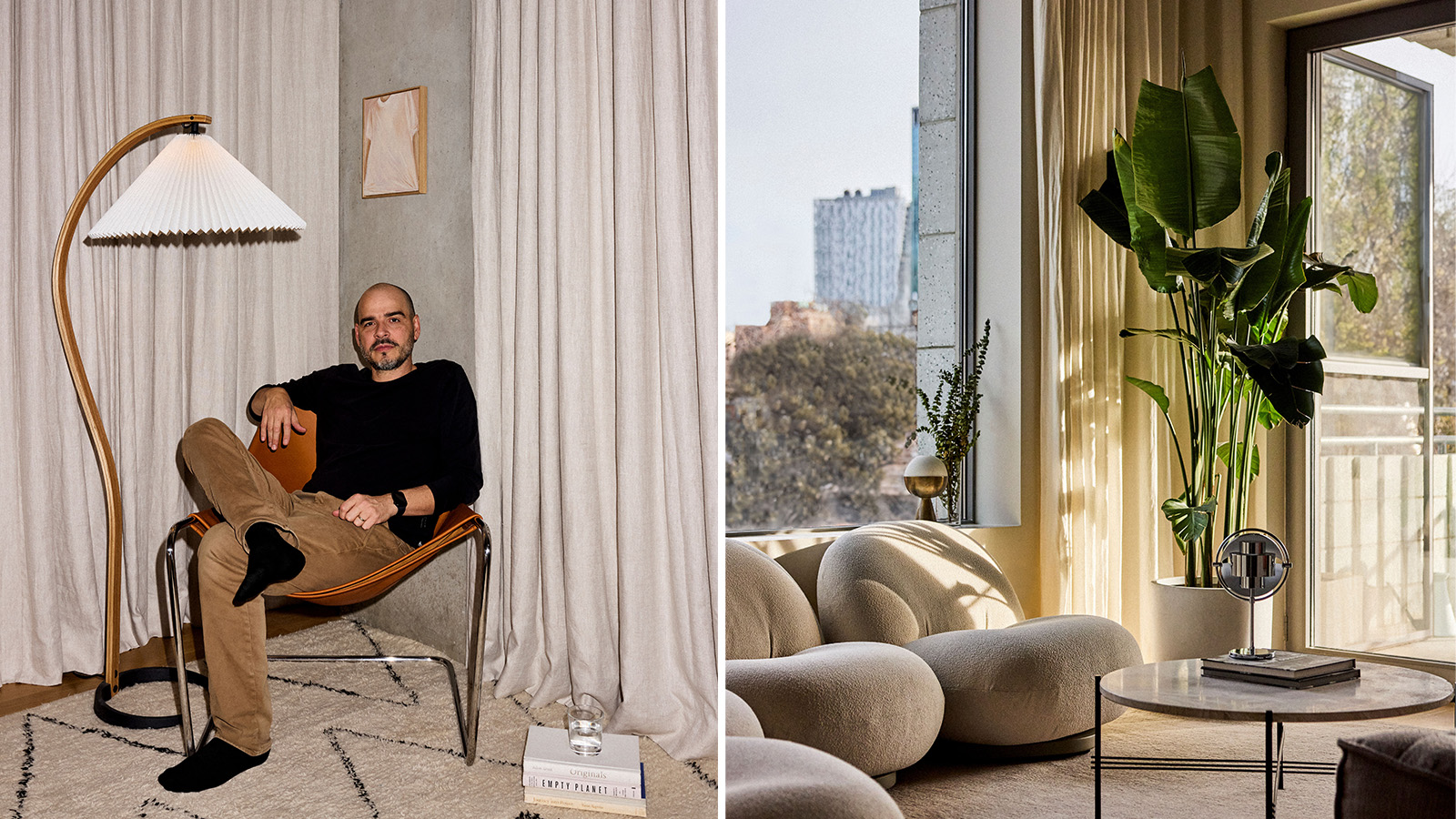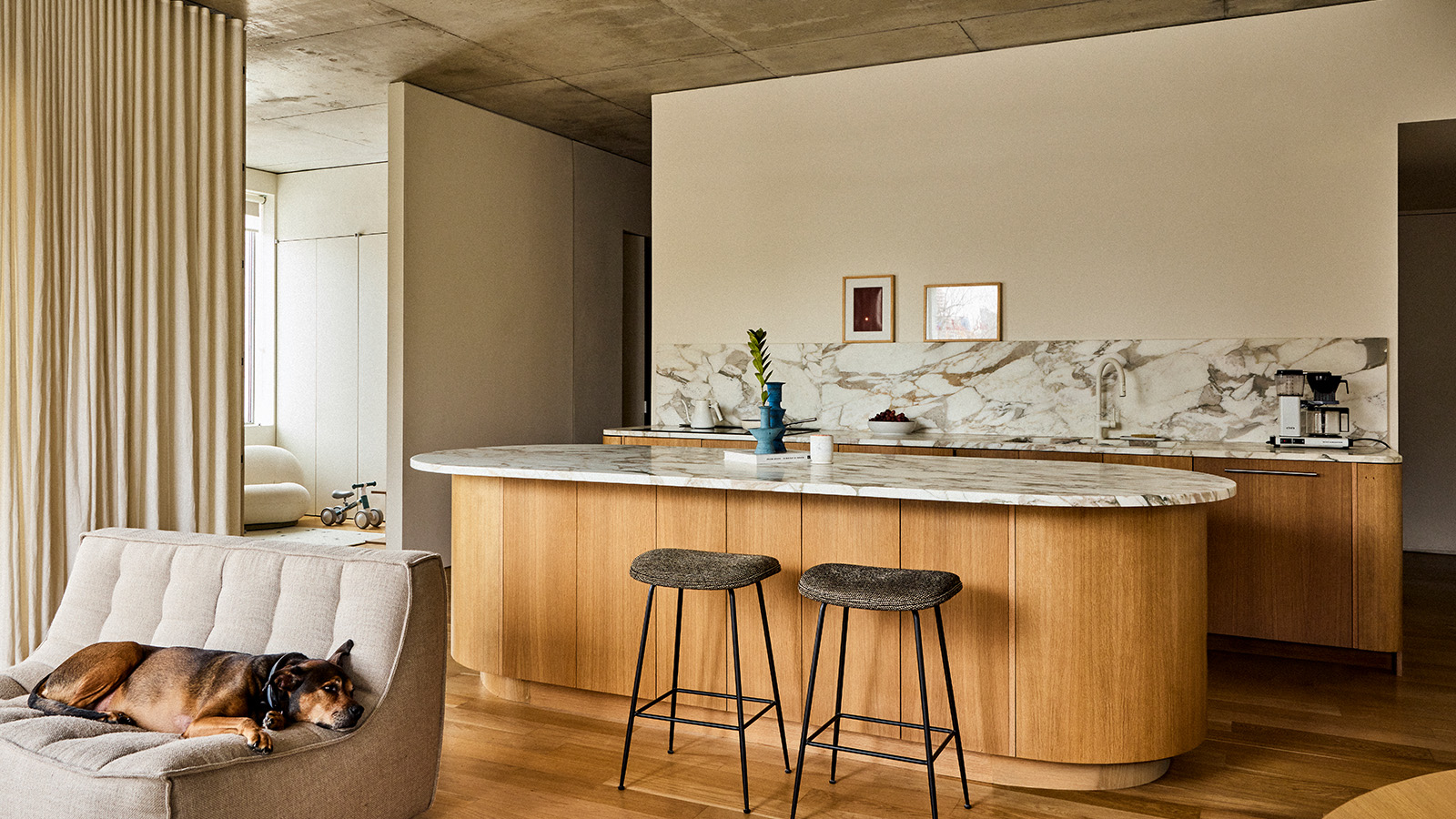
Few properties deliver as well as 450 Warren on the promise of offering ‘a new way of living' – this boutique collection of 18 condominium residences in Brooklyn seems to stand apart from its peers.
Featuring an open façade, mesh-encased walkways, and expansive windows, this project is a collaboration between Tankhouse (an NYC property developer also behind the nearby Nine Chapel residential tower) and So-Il (the Brooklyn-based architectural practice that designed the neighbourhood’s Amant Art Campus and Seoul’s Kukje Gallery).

Step inside 450 Warren and Sebastian Mendez’s Brooklyn home
Sebastian Mendez, an Argentine architect who worked for Foster & Partners before co-founding Tankhouse over a decade ago, is passionate about the power of design to present good architectural solutions to concrete urban problems. Mendez and co-founder Sam Alison-Mayne liked 450 Warren – Tankhouse’s first ground-up residential project – so much that they both moved in.
‘It was very clear to us that this was going to be a very special building, and the ideals this project proposes resonate with us,’ says Mendez. ‘The result is unique residences that are extremely functional, super livable, and have qualities that are hard to find in NYC.’

Like many of So-il’s projects, the building has a very pure, decluttered geometry to it, and feels light and airy, with high-ceilinged interiors opening on its surroundings. It is the result of a very open collaboration between the developers and architects, who are now working on their fourth project together.
‘Our main goal here was to reformulate the way in which residential buildings are conceived and built in NYC, questioning the status quo,’ explains Mendez. ‘In our case, with an emphasis on the way a project relates to its context, how the residents and residences relate to each other, and finally, what makes a residence an element that can ultimately enhance quality of life, and hopefully inspire.’
Located between an industrial area currently being redeveloped, large residential towers and rows of traditional brownstone buildings, the corner site was particularly challenging: ‘One of our key objectives was to build a project that is open to its context and relates to it in a sensible way. It’s a porous building, able to be experienced from the street and open to its community. It deals with scale in a very sensible way, by reducing the overall mass to smaller volumes.’

An essential feature of this project – and of Tankhouse’s approach to real estate development – was the attention given to shared communal spaces where the building’s residents could interact. ‘This is where projects can really differentiate from others but, more importantly, have a real impact on the way people live,’ explains Mendez. ‘Also critical is the void, the separation between volumes in our projects, which allows this communal aspect to exist [and also] gives each residence unique characteristics.’
The project comprises three volumes separated by three outdoor spaces: two courtyards on the second floor provide expansive space for residents to socialise, and are planted with lush gardens, while at the centre of the project is a vertical atrium. ‘This is the most critical space of the project: it proposes a very particular way to navigate this building, and to ultimately enter a home – it is the threshold between public and private, between exterior and interior,’ says Mendez.

‘These exterior bridges are organic in geometry, generous in size, and ultimately a collection of spaces… as opposed to corridors. By being open to the elements, these spaces provide natural light, air, and open views to the other components of the building, and also views to the other context. The feeling is one of a tree house. Before entering individual units, an exterior covered foyer provides the space to sit, take off shoes, park a stroller, or leave an umbrella.’
Each of the residences opens to multiple private outdoor spaces, with views in many different directions, resulting in a truly three-dimensional experience. Mendez and his family were the first to move in. Their fourth-floor, three-bedroom unit offers views of a tree that they particularly love, and that they can touch from their patio.

‘The social spaces and bedrooms are separated by a long, wide and very tall corridor, and each wing is served by an outdoor space,’ says Mendez of the apartment layout, which comprises an open kitchen, living and dining space organised around a very large island. ‘We come together around the stone island, where we cook, and the kids play, do homework, and sometimes eat. This space has views and light in multiple directions and opens onto a covered patio. This is where we all spend time outside when the weather is nice.’

The apartment is furnished with many pieces sourced from Copenhagen-based global design brand Gubi, which works with young designers including Gamfratesi and produces designs by icons such as Gio Ponti and Pierre Paulin. The last’s ‘Pacha’ lounge chairs are constantly moving around in Mendez’s house: ‘They’re comfortable, durable, indoor-outdoor, low-profile, chunky and organic in shape, which works well with our space and balances the strong, angular geometry of the building.’
Another favourite of Mendez and his family is Gubi’s ‘Al Fresco’ collection. ‘The aesthetic and usability of the “Al Fresco” pieces make them so flexible that they could be used inside or outdoors,’ says Mendez. ‘Both the building and these designs have a feel which is very comforting, and optimistic.’








